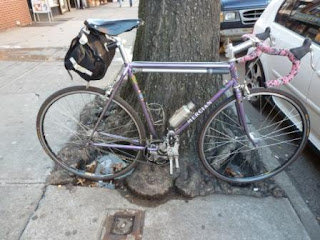This is the time of year for the "pancake ride."
You've probably been on one: You ride to someplace where pancakes (and foods that go with them) are served. And then you spend the rest of your ride burning off what you just ate.
In two of the clubs in which I rode, Pancake rides were hugely popular and, certainly, the winter rides that had the biggest turnouts.
The club to which I belonged when I was in college (Rutgers) held those rides every other Sunday in January and February, if I recall correctly. The rides took us from the urban confines of New Brunswick, New Jersey into the rural areas of western New Jersey. Actually, many of the club's rides did, but the Pancake ride had a particular destination: a firehouse that served pancake breakfasts during the winter. I think the proceeds were used to fund the volunteer fire department located in the firehouse, and that everyone who cooked, served, seated people and did all of the other work were family members or friends of the firefighters.
One of the greatest draws of that ride, apart from the complete lack of traffic outside of New Brunswick on a winter Sunday morning and the bucolic countryside, was what we called The Bottomless Plate. Yes, it was an all-you-can-eat affair. In addition to the pancakes, the house served hash browns, sausage, bacon and scrambled eggs, as well as coffee, tea and hot chocolate. It may not have been the best-quality stuff, but when you're cold and hungry, just about anything edible is delicious and hearty.
As I recall, that firehouse was very welcoming to us. That's particularly surprising given how much we ate: Those of you who are better than I am in math can calculate how much Bis-Quick it took to feed thirty to forty cyclists who'd just cycled twenty or so miles in twenty-degree weather with a wind-chill of about five or ten degrees. Also, I should add that some of us were young (i.e., college age) males, who typically had bottomless stomachs and empty wallets.
These days, of course, I'm not a young male. But all of my changes don't seem to have filled in the bottomless pit in my stomach!
Anyway, I decided, just for the heck of it, to type "pancake rides" into a Google search box. It seems that they're going on everywhere, and they're not confined to winter. Still, I'll probably always think of them as winter rides. I mean, how many other foods feel warmer and cozier after a ride on a cold day?










